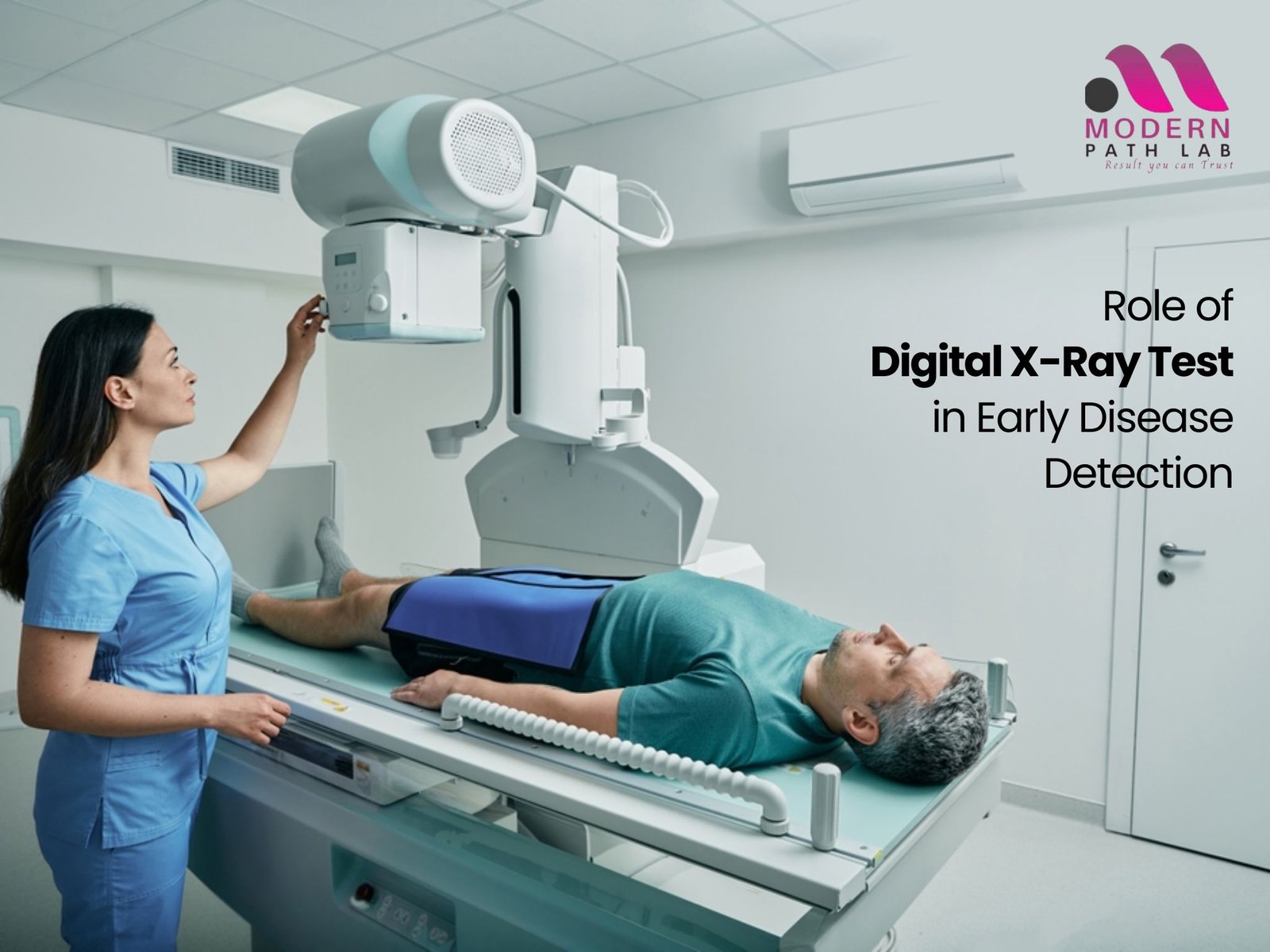
Role of Digital X-Ray Test in Early Disease Detection
Digital X-rays are a critical advancement in medical imaging technology, providing numerous benefits over traditional film X-rays. Their enhanced clarity and efficiency have revolutionized the way medical professionals detect and diagnose diseases. This blog explores the vital role of digital X-ray tests in early disease detection, highlighting their advantages and applications.
Enhanced Image Quality
Digital X-rays offer superior image quality compared to traditional film X-rays. The high-resolution images allow for more detailed visualization of the body’s internal structures. This clarity is essential for detecting minute changes and abnormalities, such as small fractures, early-stage tumors, or subtle signs of diseases.
Faster Results and Improved Efficiency
One of the primary advantages of digital X-ray scan is the speed at which results are available. Traditional X-rays require film development, which can take time. In contrast, digital X-rays produce images almost instantly, allowing for quicker diagnosis and treatment. This efficiency is particularly crucial in emergency situations where rapid decision-making can significantly impact patient outcomes.
Reduced Radiation Exposure
Digital X-ray tests typically require less radiation than traditional film X-rays. The improved sensitivity of digital sensors means that lower doses of radiation can be used to produce high-quality images. This reduction in radiation exposure is particularly beneficial for patients who require multiple X-rays over time, such as those with chronic conditions or children.
Easy Storage and Sharing
Digital X-rays can be stored electronically, making them easy to access and share. This feature is especially useful for collaborative care, where multiple specialists need to review a patient’s imaging results. The ability to quickly share images with other healthcare providers can lead to more accurate diagnoses and coordinated treatment plans.
Early Detection of Diseases
Digital X-rays play a crucial role in the early detection of various diseases. For example, in dental care, digital X-rays can identify cavities, gum disease, and other oral health issues before they become severe. In orthopedics, they can reveal early signs of osteoporosis or arthritis. In cardiology, digital X-rays can detect heart and lung conditions at an initial stage, allowing for prompt intervention.
Applications in Preventive Care
Beyond diagnosing existing conditions, digital X-rays are invaluable in preventive care. Regular screenings can help detect potential health issues before symptoms appear. For instance, routine chest X-rays can identify early signs of lung cancer or tuberculosis. Mammography, a type of digital X-ray, is a critical tool in the early detection of breast cancer, significantly improving survival rates.
Integration with Other Diagnostic Tools
Digital X-rays can be seamlessly integrated with other diagnostic tools and electronic health records (EHR). This integration allows for comprehensive patient assessments, combining imaging results with other clinical data to provide a holistic view of a patient’s health. Such synergy enhances diagnostic accuracy and treatment planning.
Future Innovations and Advancements
The field of digital radiography continues to evolve, with ongoing research and technological advancements promising even greater benefits. Innovations such as 3D imaging, artificial intelligence (AI), and machine learning are being integrated with digital X-rays to further enhance diagnostic capabilities. These advancements hold the potential to detect diseases even earlier and more accurately.
Conclusion
Digital X-rays are a cornerstone of modern medical diagnostics, offering enhanced image quality, faster results, reduced radiation exposure, and easy storage and sharing. Their role in early disease detection is indispensable, enabling healthcare providers to identify and treat conditions before they progress. As technology continues to advance, the capabilities of digital X-rays will only expand, further improving patient outcomes and advancing the field of medical imaging.
Regular screenings and early detection are crucial for maintaining good health. If you haven’t had a digital X-ray recently, consider discussing it with your healthcare provider like Modern Path Lab to ensure you’re taking proactive steps in monitoring your health.



